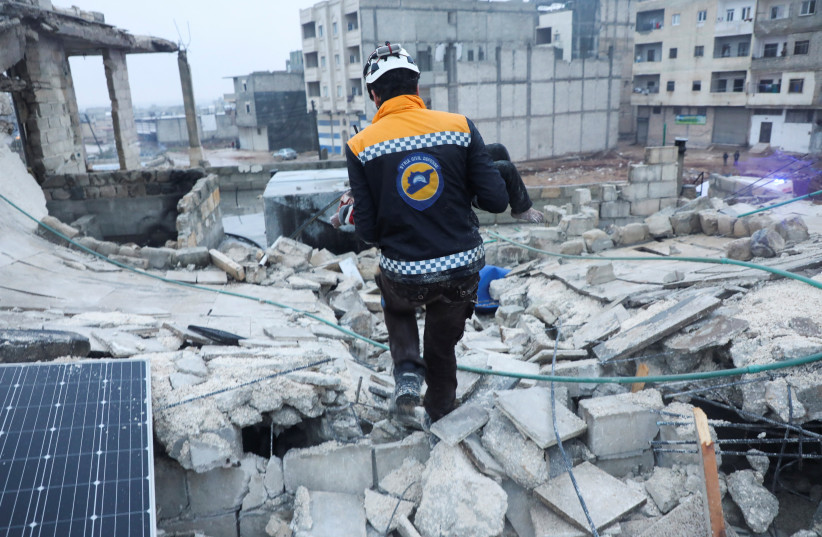The colossal earthquake that struck Turkey Monday has also wreaked havoc across the border in Syria, according to reports from aid organizations and witnesses on the ground.
Hospitals at the border are overwhelmed. That the area is divided between various armed groups and between areas under Turkish and Syrian control makes providing aid even more complicated, especially to areas in Idlib, Afrin, Aleppo and the border area of Hatay and Kilis, where refugees live.
The entire area affected by the earthquake is a center for refugees and displaced Syrians, who are already suffering from a decade of civil war. One of the key routes for Syrians receiving aid during the conflict was the road through the border town of Kilis. This is also the region most affected by the earthquake, from Gaziantep down to Kilis and to the west in Hatay Province and Iskenderun.
While rescue efforts will focus on the hardest-hit places, many are expressing concern that affected areas in Syria will not only require aid, but that a large number of refugees and internally displaced persons in the area will complicate aid provision and rescue efforts due to logistics and vulnerable housing.
Kilis was a key area
During the Syrian civil war, which began in 2011, Kilis was a key area for incoming aid. The border town in Turkey became a large center for storage areas, internally displaced persons (IDP) camps as well as major aid organizations – such as Turkey’s AFAD Disaster and Emergency Authority and the IHH Group – which had officers and centers in the area.


After Turkey launched military operations in Syria, it took over parts of the north. This worsened the conditions of refugees and IDPs, who have now only been placed at higher risk.
Another key corridor affected by the earthquake is the Bab al-Hawa border crossing from Turkey’s Reyhanli into Syria. Videos posted by the Syrian American Medical Society (SAMS) showed an incredibly crowded local hospital on Monday.
“Our hospitals are overwhelmed with patients filling the hallways. There is an immediate need for trauma supplies and a comprehensive emergency response to save lives and treat the injured,” SAMS announced.
This area is key to the support of millions of Syrians. Aid is already estimated to support around four million people. With an earthquake of this size affecting the whole area around the border crossing, more aid will be needed, and it is unclear how local authorities will manage the influx.
This issue exists in areas in Syria, like Idlib and Afrin, affected by the ongoing war – a front line that is not far away – and by the overlapping and competing control of various militia groups.
SAMS added that it was “reaching out to its healthcare partners to deliver a coordinated intervention and is contacting its numerous humanitarian stakeholders to share updates on the situation as it develops.”
Syrian Constitutional Committee co-chair Hadi Albahra, also a member of the Syrian Negotiations Commission and former president of the Syrian National Coalition, wrote online, “The Syrian people in northwest Syria need immediate help, tremendous damages, neighborhoods, towns and cities suffering many people still under destroyed buildings.”
Photos showed whole neighborhoods devastated in the region. The earthquake cut across borders – not just Syria and Turkey – but also to the front line between the Syrian regime and other groups, such as the jihadist HTS alliance in Idlib, Turkish-backed Syrian rebel groups, militias and elements of the Kurdish YPG in Tal Rifat.
Aleppo’s structures are already in bad condition due to the war. A building collapse in Aleppo in January killed 16 people. The earthquake has surely taken a staggering toll in these areas.
